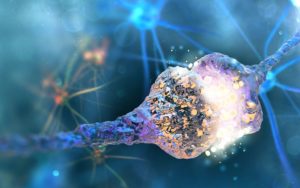One of the biggest social problems of this century has had a treatment on the market since 2006, but only recently receiving its share of attention. That important tool in the addiction treatment toolkit is Vivitrol.
Addiction problems have caught the country’s attention as never before. According to federal statistics, by 2016 over a hundred people per day died from opioid-related issues and over 2 million had developed an opioid use disorder, but today doctors have more options than ever for treatment. Opioid addicts saturate emergency and health care services, pushing their capacity beyond the limit. Worse than the statistics are the stories of entire communities hollowed out by addiction as the medical community rises to confront the threat.

The opioid crisis dates back to the 1990s when doctors ramped up prescriptions of powerful opioid pain medications, wrongly assured by experts that addiction would be a minor issue. Even in today’s more strict regulatory environment, pain medication prescriptions represent one of the more dangerous gateways into addiction. While many in the media and elsewhere have taken to using “opioid” as a catch-all term, opioid refers to synthetic drugs that act by design similarly to opiate drugs whose active ingredients come from the poppy plant.
Thankfully, medical science has worked to develop ways to break the cycle of addiction. One of the newest pieces in the anti-addiction toolkit is Vivitrol. It offers no miracle cure, however. Like any drug used to fight addiction, Vivitrol is most effective when patients follow directions and take it as part of a treatment regime that includes a doctor’s supervision and regular counseling.
What Is Vivitrol
Opioid and opiate-based medications dull pain by engaging the brain’s pain receptors. In addition to dulling the physical sensation of pain, this engagement also induces a “high” that can create feelings of euphoria or dull all physical and emotional responses. Addiction occurs when the brain becomes dependent on the drugs. Individuals grow dependent on the effects of the drug and could even manifest feelings of pain with no direct stimuli just to get the drug.
Vivitrol is a long release version of the addiction treatment drug naltrexone. Approved by the US Food and Drug Administration in 2006, it acts as a blocking agent. It engages the same receptors in the brain as opioid and opiate drugs, but then occupies the “space” otherwise taken by those drugs. Opioid and opiate drugs can no longer dull the pain and will not make the user high.
When used in conjunction with a doctor’s supervision and regular counseling, Vivitrol can prove highly effective in keeping an addict from experiencing the effects of opioids and opiates. It also has proven useful in treating those who suffer from alcohol addiction.
Like any other drug in a medication-assisted treatment plan, users need to follow all directions carefully. Counseling is also necessary to address the psychological issues associated with addiction. No drug, not even Vivitrol, can cure addiction by itself.
The Vivitrol Shot
Vivitrol comes in a once a month, 380-milligram dose. It should only enter the body via gluteal intramuscular injection and even then, only from a medical professional trained specifically to administer the drug. The medical professional must take special care to not inject Vivitrol subcutaneously since this can increase the risk of painful reaction.

The long release nature of Vivitrol allows it to effectively block receptors from opiate or opioid drug stimulation for a month. It can only work, however, when the patient’s system no longer has opioid or opiate drugs in it. The brain’s receptors must be clear so that the Vivitrol can occupy and block them from admitting opioids or opiates.
The Vivitrol shot should be used with care because it can react adversely with other addiction treatment drugs. Medical professionals must urge in no uncertain terms that patients about to undergo Vivitrol treatments be completely honest about drug or alcohol use prior to the injection. If the system has not been fully cleared of addictive drugs, Vivitrol can trigger severe symptoms of withdrawal. Doctors prescribing Vivitrol should do so with care because it could interact with opiate and opioid-based addiction treatment drugs.
Patients and medical professionals alike should study the possible side effects of Vivitrol and any other drug prior to use. This could prevent serious problems from going unnoticed.
Vivitrol Side Effects
One of the most important reasons why Vivitrol use should only be done under the supervision of a trained medical professional while following directions precisely is the side effects. These can range from unpleasant to dangerous.
First Vivitrol does block the brain from receiving stimulation from opioids or opiates, but it does not prevent those drugs from taking effect in different ways. Trying to take opioids or opiates to get a high while on Vivitrol will likely not produce the desired sensation, but can still cause coma or death as a result.
Vivitrol will not work properly if used while opioids or opiates remain in the system. This includes opiate based treatment drugs such as Suboxone and even cold medicines with codeine. For best results, the patient’s system should be free of opiate or opioid drugs for between seven and 14 days before taking Vivitrol. The combination could, however, produce immediate and unpleasant symptoms of opiate withdrawal.

As Vivitrol wears off, usually around a month after injection, opioid and opiate drugs will create normal physical and other effects. Users should understand, however, that their tolerance will have dropped in that month. If they use drugs in the same amounts or rates as before treatment, they could overdose and die.
Side effects can also occur at the site of injection and these can produce serious and painful symptoms. Patients should inform their doctor if they experience pain at the point of injection, swelling, a hard feeling on the skin, blisters, an open wound that will not heal, or a dark scab. If symptoms do not disappear after two weeks, call the doctor.
Vivitrol in some rare cases can cause liver damage or even hepatitis. If a patient experiences unexplained stomach pain over a few days or more, dark urine, yellowing of the eyes, and/or fatigue, these could be signs of the onset of liver damage and the patient should speak to his or her doctor immediately.
Other common side effects include:
- Vision difficulties
- Racing heartbeat
- Difficulty breathing or wheezing
- Mood swings and/or hallucinations
- Ear pain or ringing
- Anxiety, nervousness, or irritability
- Increased thirst
- Impotence or inability for a male to climax
Patients who experience side effects such as racing heartbeat, breathing problems, or symptoms related to liver problems should contact a doctor immediately. All of these could be signs of serious problems.
Vivitrol can also produce a range of allergic reactions in some patients, especially different types of discomfort and symptoms at the site of injection.
While some of these symptoms may also stem from the weaning process, patients should contact their doctor if they experience these or other unusual problems.
Vivitrol Versus Suboxone
Suboxone works in a similar way to Vivitrol but has received more criticism. Like methadone, Suboxone is a less potent opioid that engages the brain receptors. It does, however, produce a much less powerful reaction. The theory behind Suboxone and other similar medications is that it represents part of a stepping down process from highly potent drugs such as OxyContin or heroin.
Critics, however, claim that Suboxone hurts more than it helps. Since it is also an opioid, many claim that its use merely represents substituting one addictive opioid for another. Suboxone is an opioid and works the same way as opioids and opiates. Quitting “cold turkey” from Suboxone, once treatment ends, can produce unpleasant and even sometimes dangerous withdrawal side effects. Suboxone also does not require full detoxification before treatment.
Suboxone’s advantage lies in the fact that it does come at a much lower cost per dose than Vivitrol at this point.
Vivitrol, however, offers advantages as well. It treats the addiction directly by going after the physiological target in the brain. It blocks receptors and does not permit opioids or opiates to engage. Most importantly, since Vivitrol is not an opioid or opiate, it does not produce the high, nor do patients develop addiction the way they may with Suboxone.
Another benefit of Vivitrol lies in its long-term effects. Much of the opioid crisis centers in rural and remote regions without many legitimate clinics for treatment. Rural residents may find treatment easier and more convenient with Vivitrol versus the orally taken Suboxone. Also, there is a much smaller chance of forgetting to take the medication from one day to the next.
A study conducted by the National Institute on Drug Abuse found that the effectiveness of the two drugs was roughly equivalent when the medication was prescribed and used as directed. The main criticism of Vivitrol lay in the fact that a patient must be completely clean before using. In some studies, patients relapsed before they could start their Vivitrol regimen. This would suggest that Vivitrol treatment might be optimal in a more closed treatment setting, such as a recovery center or even jail or prison.
Is Vivitrol an Agonist
Drug addiction treatment medications fall into two categories, agonist and antagonist. Agonist drugs mimic the action of the brain’s neurotransmitter. Addictive drugs engage the dopamine neurotransmitter, which can create feelings of euphoria or the “high.” Direct agonists engage the transmitter itself while indirect agonists affect the number of transmitters affected.
Antagonist drugs bind themselves to neurotransmitter receptors, preventing any binding with substances such as opioids. Neurotransmitters do not have a chance to be either produced or released.

Because Vivitrol attaches itself to receptors and blocks any other substance from binding, it is commonly considered an antagonist medication.
How Often Can You Get a Vivitrol Shot
The first Vivitrol shot should come between seven and 14 days after opioids or opiates have left the system. If opioid or opiates are present in the body after injection, this could spark powerful withdrawal symptoms. From the date of the first injection, each subsequent shot should come every four weeks until treatment is completed. Experts recommend that medical professionals injecting Vivitrol alternate buttocks with each injection to reduce the chance of adverse reactions.
Since Vivitrol is neither an opioid nor an opiate, patients do not have to step down their dosage at the end of treatment. Addiction experts advise, however, that patients continue to adhere to a recommended psychological or psychiatric counseling regimen to help strengthen the addict against relapse.
Can You Get Hepatitis From Vivitrol
While hepatitis is listed as a rare and possible side effect of Vivitrol and its active ingredient of naltrexone, the National Institutes of Health claim that the connection is not clear. According to their website overview of naltrexone, “the role of the medication in the liver injury has not always been clear and there has been no clear description of the clinical features of the injury. Thus, while often considered hepatotoxic, naltrexone has not been definitively linked to cases of clinically apparent liver injury.”
The overview went on to say that naltrexone is rapidly processed by the liver into inactive forms. Some experts suggest that liver disease reports may have come from the use of naltrexone on alcoholics who may already have damaged their liver pretreatment.
Although the link between Vivitrol and hepatitis has never been scientifically proven, most consider it prudent to list it as a possible side effect due to the serious nature of hepatitis and other liver diseases.
Contact Us
Riverside Recovery Center serves as one of the premier addiction treatment centers in northwest Washington state. For over two decades, its medical professionals and staff have implemented caring and effective treatment protocols to help individuals overcome a wide variety of addictions to lead a more productive and healthy life. The staff at Riverside Recovery Center understand that each patient is an individual, and as such will receive a specialized treatment plan that addresses their particular needs and issues.
If you or a family member have started down the slow-motion tragedy of addiction, help is as close as a phone or an email. Reach out to Riverside Recovery Center today.

reports on daily cialis prorgikili Pumpoberroub Generic Lasix No Prescription
Low Cost Cialis 2.5 Mg prorgikili Pumpoberroub tadalafil research
I got what you intend,bookmarked, very decent website.
Takipçi satın almak için tıklayın. Hemen tıklayın ve takipçi satın al
sayfamızdan takipçi satın alın.
each time i used to read smaller articles or reviews that as well clear their motive, and that
is also happening with this post which I am reading at this place.
clan symbol knight online clanlar için ücretsiz bir paylaşım sitesidir.
I’m not sure exactly why but this weblog is loading incredibly slow for me.
Is anyone else having this issue or is it a problem on my end?
I’ll check back later and see if the problem still exists.
Escort bulmak için escort sitemizi ziyaret
et ve escort bayanlar ile görüş!
Every weekend i used to go to see this web page, for the reason that i wish for enjoyment,
since this this web page conations genuinely
fastidious funny information too.
Do you have a spam problem on this site; I also am a blogger, and I was
curious about your situation; many of us have created some nice practices and we are looking to
trade solutions with other folks, be sure to shoot me an email if interested.
I’m extremely impressed with your writing skills and also with the
layout on your blog. Is this a paid theme or did you modify it yourself?
Either way keep up the nice quality writing, it is rare to see a nice blog like this one today.
Takipçi satın almak için tıkla ve ucuz takipçi satın al.
Porn Movie,watch porn, watch sex, juvenile porn, virgin porn, watch me, watch general sex,free porn tube, ass fuck, cunt dick, anal porn ,
oral porno, google sex, fuck google , google porn , Facebook porn , Twitter porn , youtube
porn , Mynet porn
Porn Movie,watch porn, watch sex, juvenile porn,
virgin porn, watch me, watch general sex,free porn tube, ass
fuck, cunt dick, anal porn ,
oral porno, google sex, fuck google , google porn , Facebook porn , Twitter porn , youtube
porn , Mynet porn
Porn Movie,watch porn, watch sex, juvenile porn, virgin porn,
watch me, watch general sex,free porn tube, ass fuck, cunt dick, anal porn ,
oral porno, google sex, fuck google , google
porn , Facebook porn , Twitter porn , youtube porn , Mynet pornSD
Paribu güvenilir mi öğrenmek için hemen tıklayın ve paribu güvenilir mi öğrenin!
Kayısısı ile ünlü Malatya ilimizin eşsiz Malatya kayısısını en taze ve uygun fiyatlar ile http://www.corumkuruyemis.com üzerinden satın alabilirsiniz.
Sizler için sağlık açısından çok faydalı olan diğer kuru meyve çeşitlerimize yine sitemiz üzerinden ulaşabilir ve Türkiye’nin dört bir yanında kargo ile teslim alabilirsiniz.
Afiyet olsun
Kaju, Fındık, Fıstık , Antep Fıstığı ve Badem gibi
eşsiz lezzetlerimizin birlikteliği ile her zaman en taze her zaman en uygun fiyatlı ürünleri sizlere sunuyoruz.
Karışık Kuruyemiş fiyatları için sitemizi ziyaret edebilir, kargo ile teslim alabilir veya istanbul beylikdüzünde bulunan mağazamızdan ürünlerinizi satın alabilirsiniz.
Sağlıklı günler afiyet olsun.
Thanks to our Doega website, you can enjoy the happiness you want without getting tired.
Actually, I wouldn’t have guessed that I would say this before, but
I think this site is great. Actually, I didn’t
think this site would be this great, but that was the result.
I wish you guys also visit this website (doega.com) and enjoy yourself.
Make sure you will never get bored with this website.
Why? Because this website has been specially prepared for
you.
Our other business partner works for you for hours every day.
If you want to see our efforts, be happy or congratulate us, log in to our
website of doega. If you want to access more information and watch free videos, come here.
Our Doega website will be enough for both you and us. You have no doubts about that,
my friends. If you want to have a really happy time,
don’t worry. You ask why? Because your old friend doega
is with you. Marsha May 2021 We will offer you the greatest and highest quality happiness.
You can watch the marsha may 2021 video for free on our Doega website.
How Does? Log in to our website for free and start watching the videos.
The videos on our website are completely ad-free and specially
prepared for you. If you really want to achieve something, this job is
for you. What we mean by work is to watch free videos, my friends.
One day while surfing the internet, I came across
a website and saw that it contains very funny videos.
Actually, I didn’t laugh at first, but as time passed, I started to laugh more.
I didn’t know why I was laughing, but the current video sounded pretty
funny to me. You can experience this experience on our website, it is not a difficult thing, my friends.
Thanks to our Doega website, you can enjoy the happiness you want without getting tired.
Actually, I wouldn’t have guessed that I would say this before, but I think this site is great.
Actually, I didn’t think this site would be this great,
but that was the result. I wish you guys also visit this website (doega.com) and enjoy yourself.
Make sure you will never get bored with this website.
Why? Because this website has been specially prepared for you.
Our other business partner works for you for hours every day.
If you want to see our efforts, be happy or congratulate
us, log in to our website of doega. If you want to access more information and watch
free videos, come here. Our Doega website will be enough for both you and us.
You have no doubts about that, my friends.
If you want to have a really happy time, don’t
worry. You ask why? Because your old friend doega is with you.
Marsha May 2021 We will offer you the greatest and
highest quality happiness.
You can watch the marsha may 2021 video for free on our Doega website.
How Does? Log in to our website for free and start watching the videos.
The videos on our website are completely ad-free and specially
prepared for you. If you really want to achieve something,
this job is for you. What we mean by work is to watch free videos, my
friends. One day while surfing the internet, I came across a website and saw that it contains very funny videos.
Actually, I didn’t laugh at first, but as time passed, I started to laugh more.
I didn’t know why I was laughing, but the current video sounded pretty funny to me.
You can experience this experience on our
website, it is not a difficult thing, my friends.
Hemen tıkla ve instagram takipçi satın al. Sen de instagram takipçi satın almak
istiyorsan tıkla.
Sizlere özel fiyatlar ile instagram takipçi satın al
sayfamız aktif. Tıklayın ve instagram takipçi satın al
sayfamızdan instagram takipçi satın alın.
woocommerce kargo entegrasyonu arayanlar için woocommerce kargo entegrasyonu.
tıkla ve woocommerce kargo entegrasyonu incele.
adım burcu cep telefon numaram +905397469110 telefonda sanal
sex yapabilirim seninle beraber.
beni arıyabilirsin.
It’s going to be finish of mine day, but before finish I am reading this
enormous paragraph to improve my knowledge.
Hi Dear, are you actually visiting this web site daily, if so then you will absolutely obtain nice knowledge.
Thanks for the auspicious writeup. It in truth was a amusement account it.
Glance complex to more delivered agreeable from you!
By the way, how could we keep in touch?
Eryaman Diş Plikliniği ön görüsü, sağlıklı bir ağız ve diş yapısı
ile güzel bir gülüş için çocuğun doğumunu takiben ilk 1 yıl içerisinde başlatılmalıdır.
Aynı zamanda bu süreç, çocuklarımızın diş hekimine alışmasını sağlarken; ileride yaşanması muhtemel korkuların da önüne geçecektir.
Bazen, çocukların dişleri ile ilgili sorunlar çok erken yaşlarda
başlayabilir. Çocuğun beslenmesi, diş bakımı ve emme alışkanlıkları hakkında bilgi edinmek, pedodonti sorunlarının daha başlamadan önlenmesini sağlayabilir.
Çocuğu diş hekimine götürmeden önce prosedür hakkında bilgi almak en iyi seçenektir.
Çok büyük çürükler oluşmadan ve şiddetli ağrılar yaşanmadan bir diş hekimine başvurmak, tedavinin hem çocuk hem de diş hekimi için çok daha sorunsuz geçmesini sağlayacaktır.
Your style is so unique in comparison to other people I
have read stuff from. Thanks for posting when you have the opportunity, Guess I will just book
mark this web site.
Normally I don’t learn article on blogs, but I would like
to say that this write-up very pressured me to take a look
at and do so! Your writing style has been surprised me.
Thank you, very great post.
Fantastic blog you have here but I was wanting to know if you knew of
any discussion boards that cover the same topics discussed here?
I’d really like to be a part of group where I can get suggestions from other experienced people that share the same interest.
If you have any recommendations, please let me know.
Cheers!